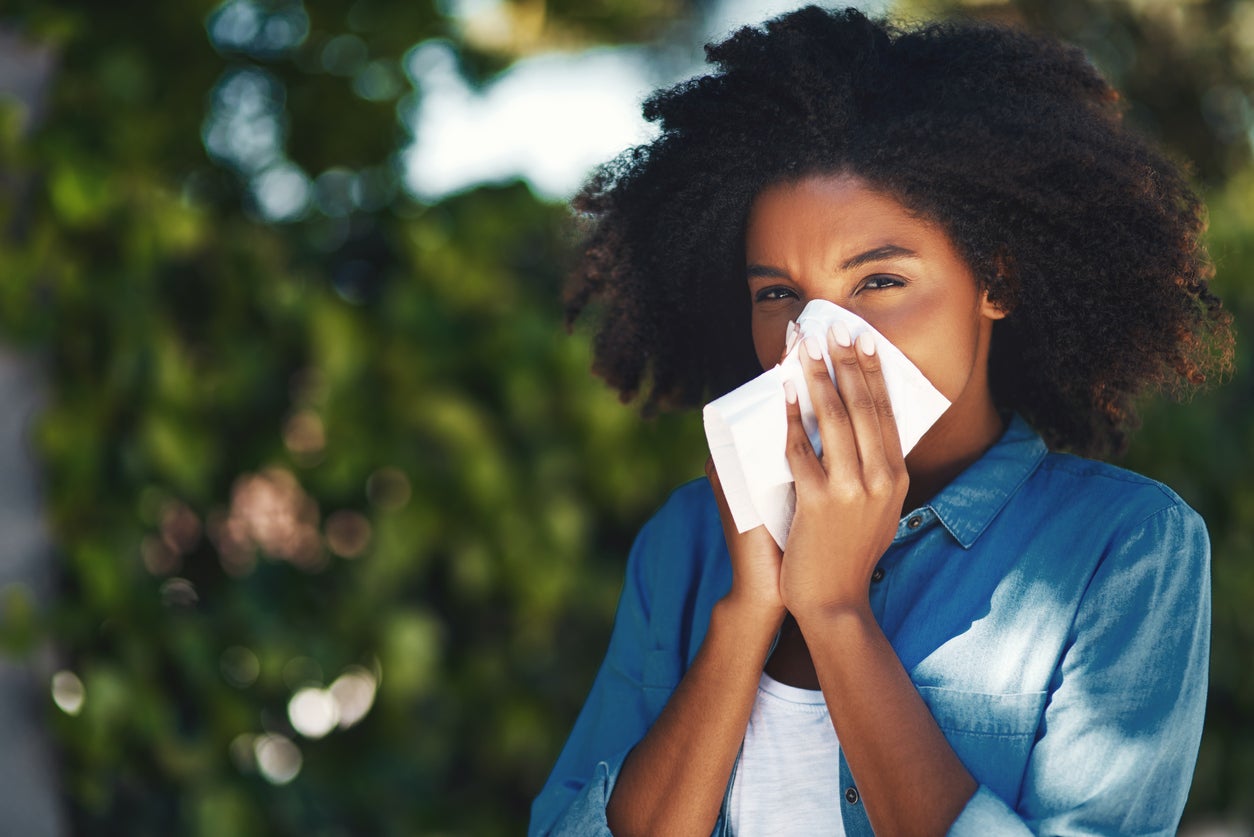What is today’s pollen forecast and which areas have the highest count?
Pollen can cause the nose, eyes and throat to become swollen, irritated and inflamed

Hay fever sufferers can expect more misery this week, as pollen counts are on the rise again.
From sneezing and itchy eyes to a runny nose and headaches, high pollen can make life miserable for millions.
One in five people are affected at some point in their life, and during the warm summer sun symptoms can get worse.
The UK is once again set to experience 27C sunshine this week after a weekend of rain, according to the latest weather forecast.
The Met Office has now released data on the pollen forecast for 5 days across the whole of the country.
“We measure pollen levels across the country and work with other organisations, (like the National Pollen and Aerobiological Unit) to create a five-day forecast,” the Met Office said.
Below is a map of the pollen count for different regions in the country. This means that the pollen count you see on a forecast is for the whole region and not the specific location.
Green = low.
M = Moderate.
H = High.
Are there different types of pollen?
The Met Office has said that this often depends on the time of year, as the type of pollen in the air will vary.
There are 30 different types of pollen that cause hay fever and it is possible to be allergic to more than one type.
Some people may be allergic to grass pollen, which is often found in the late spring and early summer. While tree pollen tends to be released during spring and can affect around 25% of people.
Weed pollen on the other hand can be released at any time from the early spring to the late autumn.
Treatments for hay fever
The NHS says there is no current cure for hay fever, but there are a few things you can do to ease your symptoms when the pollen count is high. Here are some steps you can take:
• You can put Vaseline around your nostrils to trap the pollen.
• Try wearing wraparound sunglasses to stop pollen from getting into your eyes.
• Shower and change your clothes after you have been outside to wash the pollen off.
• If the pollen count is quite high, try to stay indoors if possible.
• Keep windows and doors shut as much as possible.
• Vaccum regularly and when dusting your home, try using a damp cloth.
• Invest in a pollen filter for the air vents in your car.
“Try to stay at home and avoid contact with other people if you have a high temperature or you do not feel well enough to do your normal activities,” the NHS website adds.
Subscribe to Independent Premium to bookmark this article
Want to bookmark your favourite articles and stories to read or reference later? Start your Independent Premium subscription today.

Join our commenting forum
Join thought-provoking conversations, follow other Independent readers and see their replies